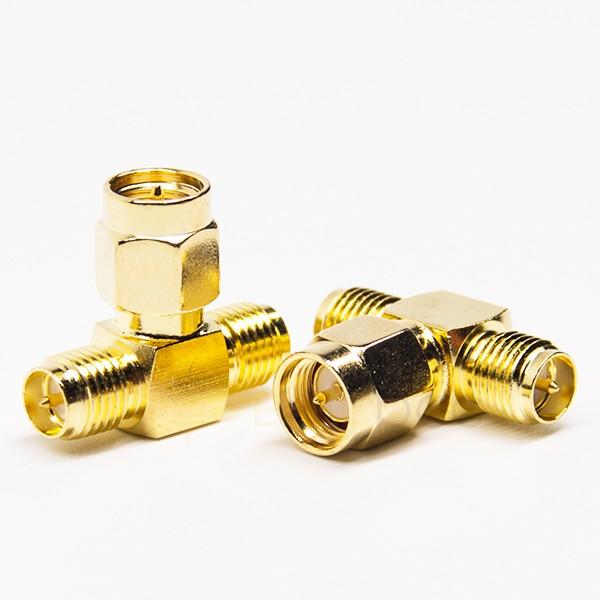SMA connectors are the unsung heroes of the electronics and telecommunications world. These tiny components are crucial to the smooth functioning of various devices, yet not many people are aware of their existence. This article provides a comprehensive overview of the different types of SMA connectors available on the market. So, buckle up and let's dive into the fascinating world of SMA connectors!
A Quick Introduction to SMA Connectors
Before we delve into the various types of SMA connectors, it's essential to understand what they are and why they are so important.
What are SMA Connectors?
SMA, or SubMiniature version A, connectors are coaxial RF (radio frequency) connectors that are primarily used in high-frequency applications. These connectors are designed to provide a durable, secure, and reliable connection between various devices, such as antennas, cables, and electronic components.
Why are SMA Connectors Important?
SMA connectors are crucial for ensuring optimum signal transmission between devices. They're widely used in the telecommunications, aerospace, and military industries because of their compact design, high durability, and excellent performance in high-frequency applications.

Delving into the Different Types of SMA Connectors
Now that we've established the importance of SMA connectors, let's explore the various types available on the market. Although there are numerous SMA connector configurations, we'll focus on the three main categories: Standard SMA, Reverse Polarity SMA (RP-SMA), and Reverse Thread SMA (RT-SMA).
Standard SMA Connectors
Standard SMA connectors are the most common type of SMA connectors. These connectors have a male connector with a center pin and female connector with a center receptacle. Standard SMA connectors are used in a wide range of applications, from WiFi routers and antennas to test equipment and instrumentation.
Straight vs. Right-Angle SMA Connectors
Within the standard SMA connector category, there are two subtypes: straight and right-angle connectors. Straight SMA connectors, as the name suggests, have a linear configuration, while right-angle connectors have a 90-degree bend that allows for a more compact and tidy connection. Both types of connectors provide reliable performance, but the choice between them depends on the specific requirements of the application and available space.
Reverse Polarity SMA (RP-SMA) Connectors
Reverse Polarity SMA (RP-SMA) connectors are a variation of the standard SMA connectors. They feature a reversed gender configuration, meaning that the male connector has a center receptacle, and the female connector has a center pin. This design was introduced to comply with FCC regulations, which aimed to prevent consumers from accidentally connecting high-gain antennas to devices and violating RF exposure limits.
RP-SMA vs. Standard SMA: What's the Difference?
The main difference between RP-SMA and standard SMA connectors lies in their gender configuration. While the performance characteristics of both types of connectors are similar, the reversed gender of RP-SMA connectors provides an added layer of safety. This makes RP-SMA connectors the preferred choice for consumer electronics, such as WiFi routers and wireless access points.

Reverse Thread SMA (RT-SMA) Connectors
Reverse Thread SMA (RT-SMA) connectors are another variation of SMA connectors. These connectors have a reversed thread configuration, meaning that the male connector has a left-hand thread, while the female connector has a right-hand thread. This design is intended to prevent cross-connection between devices with different connector types.
RT-SMA Applications: Where Are They Used?
RT-SMA connectors are primarily used in military and aerospace applications, where the risk of cross-connection can have severe consequences. The reversed thread design ensures that only compatible devices can be connected, minimizing the chances of signal interference or equipment damage.
Choosing the Right SMA Connector: Factors to Consider
With the plethora of SMA connector types available, selecting the right one for your application can be a daunting task. Here are some factors to consider when making your choice:
- 1. Frequency range: Ensure that the SMA connector you choose is compatible with the frequency range of your application.
- 2. Impedance: SMA connectors are typically available in 50-ohm or 75-ohm impedance. Make sure to select the appropriate impedance for your application.
- 3. Durability: The durability of SMA connectors is measured in mating cycles. Choose a connector with a higher number of mating cycles for applications requiring frequent connections and disconnections.
- 4. Mounting type: Consider the mounting type (e.g., panel mount, edge mount, or cable mount) that best suits your application's requirements.
In Conclusion: SMA Connectors, the Backbone of High-Frequency Applications
SMA connectors play a vital role in the seamless functioning of various high-frequency applications. By understanding the different types of SMA connectors and their specific features, you can make an informed decision when selecting the right connector for your needs. So, the next time you come across an SMA connector, you'll know precisely what's going on behind the scenes!

